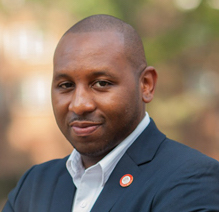City Council members Donovan Richards Jr. (D-Arverne, Brookville, Edgemere, Far Rockaway, Laurelton, Rosedale, Springfield Gardens) and Rory Lancman (D-Kew Gardens Hills, Pomonok, Electchester, Fresh Meadows, Hillcrest, Jamaica Estates, Briarwood, Parkway Village, Jamaica Hills, Jamaica) yesterday took the New York Police Department’s (NYPD) top officials to task as they demanded data regarding marijuana arrests across the city.

Richards and Lancman’s demand came during a joint hearing of the Committees on Public Safety and the Justice System for the disparity in marijuana arrests for neighborhoods of color over white communities in regards to the city’s marijuana enforcement practices.

“Unfortunately, the most recent numbers show that in our city, the enforcement of marijuana laws continue to be a social and racial justice issue. Last year, only 9 percent of low-level marijuana arrests were of white individuals while over 86 percent of those arrested were Black and Hispanic,” said Richards, sho chairs the Public Safety Committee.
According to Chief Dermot Shea, who heads the NYPD’s Crime Control Strategies Bureau, the disparity in the arrests are due to community complaints of marijuana usage in the neighborhoods and not bias policing.
“The overwhelming majority of arrests or summonses for marijuana come from community complaints. In 2017, there were nearly 26,000 911 calls complaining about the use of marijuana, an increase of 12% from 2016. 311 calls complaining about marijuana use also significantly increased in 2017,” said Shea.
However, when pressed for the data leading to the NYPD’s arrests numbers, Shea was unable to produce the 311 and 911 call data but was able to give the top 15 precincts with the highest marijuana arrests. The list included 102nd Precinct in Richmond Hill and the 114th Precinct in Astoria.

“It is incomprehensible that the NYPD failed to produce 311 and 911 call data on marijuana complaints to Committee members, as requested, given that the Department consistently cites this information as its rationale for current marijuana enforcement. We need to see specific numbers in order to fully understand what is driving the unjust racial disparity in marijuana arrests,” said a joint statement from Richards and Lancman.
Shea went on to note that he believes that though the marijuana arrests show a disparity it is not due to police enforcement but put the blame on community complaints.
“The arrests that we make for marijuana use are exactly overlayed in the parts of the city where we are receiving direct complaints from the public about marijuana burning,” added Shea.
The police department’s current marijuana policy was instituted back in 2014 and under the law, officers are instructed to charge the penal law violation of unlawful possession of marijuana when he/she observes a person in possession of 25 grams or less of marijuana in public view. Previous to the change, the charges for criminal possession of marijuana in the fifth degree was a Class B misdemeanor.








